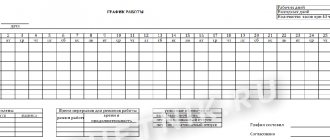The need for regulated breaks
During work, a person must maintain increased attention, quickly process the information received, have a certain speed when performing a particular operation, have precise coordination of movement, etc. During the day, all this can lead to overload and fatigue of the body.
It has an adverse effect on human performance and the performance of monotonous and simplified operations on factory conveyors. Such a production process lasts in a forced mode and requires the employee to maintain a given posture, which leads to fatigue. And this threatens:
- deterioration of immune resistance to infections;
- the appearance of increased irritability;
- the occurrence of pathologies of blood vessels and heart.
The reduction of fatigue is facilitated by the correct organization of work and rest regimes at the enterprise. When developing it, it is necessary to take into account the scientifically based position on the correct rhythmic alternation of work and rest. It was developed back in 1904 by I.M. Sechenov.
Rational mode
Alternation between job duties and breaks should be designed in such a way that the individual can be kept active and in good health. All this implies a rational regime of work and rest. It is possible when creating:
— breaks for eating, cooling or heating;
— pauses during the working day;
— change in forms of activity (physical and mental);
— changing environmental factors (working at low and then at normal temperatures);
— minimal monotony of production process operations;
— conditions for recreation (in specially equipped rooms), etc.
A rational work and rest regime is developed taking into account fluctuations in human performance. The main objective of such a routine is to increase the period when the employee shows high production results, as well as to reduce the fatigue phase.
Duration of weekly rest
26. The weekly uninterrupted rest must immediately precede or immediately follow the daily (between-shift) rest, and its duration must be at least 42 hours.
Any daily rest can be replaced by a weekly rest. … 19. Weekly rest must be at least 45 hours. This rest must begin no later than the sixth daily period following the completion of the previous weekly rest.
On the one hand, the driver’s weekly rest period has been increased from 42 to 45 hours .
On the other hand, previously weekly rest had to be prescribed in conjunction with daily rest (before or after it). Taking into account that in the worst case the daily rest was 9 hours, the total duration of rest was no less than 51 hours.
From January 1, 2021, the total duration of rest can be 45 hours, because... weekly rest will overlap daily rest. On the one hand, this is good for employers, who can create more flexible work schedules. On the other hand, this is not very good for drivers, because... The duration of rest may become shorter.
Rest breaks
In order to maintain sustainable human performance, the work and rest regime must include micro-breaks. According to current standards, they should not be less than 9-15% of production time. The work and rest schedule of an enterprise necessarily includes regulated breaks not only for rest, but also for a person’s personal needs. Their number and duration directly depend on the specifics of the work.
So, it is important to give employees a short rest an hour before lunch and the same time before the end of the working day. The duration of such regulated pauses is usually 10-15 minutes. Also, during the period of greatest decline in performance, a person should take a ten-minute break for personal needs. The work and rest schedule for people performing heavy work should include hourly five-minute breaks.
As for the lunch break, it should be arranged in such a way that the working day is divided in half. The duration of rest for meals ranges from 40 to 60 minutes. During this time, the person completely restores his physiological functions. All breaks provided by the management of the enterprise must be fixed in the work schedule. In this case, it is necessary to adhere to certain rules. Thus, the total time allocated for rest when performing heavy work can range from 4 to 20 percent. If an employee is forced to be under nervous tension, then this figure increases to 14-25%. People in mental professions are given breaks within 10% of the entire working day.
It is worth saying that regulated rest is the most effective. Irregular interruptions, as well as random downtime, only disrupt the normal rhythm of work.
Mandatory simultaneous rest for crew drivers
Drivers working as part of a group of drivers (hereinafter referred to as the crew) are required to simultaneously and fully use their daily rest for at least 9 hours before the end of the daily period, which for the crew can be increased to 30 hours.
From January 1, 2021, new requirements are introduced for drivers who are in the car at the same time (as part of the crew). It lies in the fact that all crew drivers must simultaneously use at least 9 hours of rest.
Thus, it turns out that even if there are several drivers in one car, this car cannot be constantly in motion. Until December 31, 2021, it was theoretically possible to create work schedules for three crew drivers so that the drivers would replace each other and the vehicle would be in motion all the time.
Types of recreation
A break from work can be either passive or active. The first of them is important when a person is busy performing heavy physical activities. These are jobs that require gradual transitions or standing. During a passive pause, a person sits or lies.
Active rest is recommended for those jobs that take place in the most favorable conditions. In this case, the person is offered to perform industrial gymnastics, consisting of a special set of exercises. Active rest promotes the fastest restoration of vitality. This happens due to a change in activity. At the same time, the energy that was expended by the working organ is restored in a short period of time.
In any case, the work and rest regime must have pauses, the nature of which contrasts with the nature of the employee’s work activity. After all, alternating mental and physical activity is extremely important for health.
Types of rest time
Rest time is the period during which an employee is not engaged in performing work functions.
Includes:
- a break during a working day or shift;
- daily rest;
- weekend;
- non-working holidays;
- vacation.
Labor efficiency depends on the quality of workers' rest, since tension and fatigue reduce the level of performance.
Thus, the main task of organizing work time regimes is to reduce downtime, loss of work time, optimize labor, increase efficiency while increasing employee satisfaction with the organization of work processes, and as a result, increase the performance of each worker in the organization.
>
Intra-shift mode
The problem of optimal use of labor time is solved taking into account the specifics of the enterprise. In this case, different types of work and rest regimes can be developed. Among them: shift and monthly, daily and weekly, as well as the longest - annual. Let's consider the first of them.
The intra-shift work and rest schedule for workers has clear regulations. However, it is limited by the start and end time of the performance of official duties. The shift work schedule indicates the exact time of the lunch break, as well as the frequency and duration of rest breaks.
The daily work and rest schedule depends on the specifics of the work performed. So, if a person’s profession requires him to exert little physical effort and little nervous tension, then two breaks are arranged during the shift. One of them starts 2 hours after the start of work and lasts five minutes. The second break is arranged before the end of work (an hour and a half before). Its duration is also 5 minutes.
The daily routine of work and rest at work requiring moderate physical effort or with moderate nervous tension is somewhat different. In this case there are also two breaks, only their duration is 10 minutes. One of them is arranged after the employee has performed his duties for the first one to one and a half hours. A person can take a second break no earlier than two hours before the end of the shift.
A more gentle regime of work and rest is provided for those who work with great physical effort (this applies, for example, to harvesting crops) or under conditions of nervous overload. In such cases, five-minute breaks are arranged for people after the first and second hours of work. Meal time begins 2.5 hours after the start of work. A fourth break is provided for such work. It lasts five minutes and starts an hour after lunch. The fifth break is longer. After 2.5 hours have passed since eating, a person can rest for 30 minutes. Also, this mode of work and rest includes time for dinner. This break lasts 30 minutes. The seventh break in work for people making great physical efforts is provided for an hour before the end of the shift. It lasts 10 minutes.
The work and rest schedule of drivers has special specifics. People in this profession are given a two-hour break in the middle of the working day to eat, which must begin no later than 4 hours after the start of work.
It is worth keeping in mind that the work schedule should not be violated. It is not allowed to transfer all provided breaks to the end of the shift, and therefore the earlier departure of the employee. It should also be remembered that excessively long pauses during the working day, ranging from 30-40 minutes, disrupt the work environment. After them, additional time will be required for the person to “get involved” in the production process.
What is working hours
In the process of labor relations, certain mutual obligations arise between the employer and the worker, the duration of which is regulated at the legislative level.
There are two concepts here:
- Work time . This is the length of time that a worker must spend on useful activities, and the employer must provide wages for this. Classically, this is 40 hours weekly. Depending on the categories of citizens and the conditions for performing work functions, it may decrease.
- Working hours . Here the term should be understood as the distribution of useful activities over specific periods within the normal working hours. As an example, the most common working hours are a five-day week with the working day starting at 9 am and ending at 6 pm with a one-hour lunch break.
It should be noted that the concept of working time regime is closely related not only to regulatory documents in the field of labor organization, but also to another equally important area - labor protection. It is set taking into account the physiological needs of the human body. The need for complete recovery of the body after the activity is also taken into account.
Remember, in case of violation of the work regime, you are subject to a violation not only of the organization, but also of labor protection with all possible legal consequences.
Daily regime
Multi-shift work and rest schedules for working people are used by enterprises with long production cycles. These are production facilities that produce products throughout the day. Sometimes the duration of the technological cycle is equal to the duration of two shifts.
At such enterprises, a person’s work and rest schedule is drawn up taking into account daily changes in his physiological functions. The work performed on the first shift is considered the most effective. That is why a person should work less at night. After all, it is known that at this time his performance decreases sharply, and according to studies, the number of errors during this period almost doubles.
At such enterprises, special shift schedules are drawn up. They must correspond to the natural daily regimen. The employee is entitled to rest between shifts. Its duration should be equal to twice the time preceding this period of work. So, with eight-hour shifts, the breaks between them will be at least sixteen hours.
Accounting for the time of cargo security and the time of presence of the second driver in the car
21. The time spent guarding cargo and the vehicle (subclause “h” of clause 15 of the Regulations) is counted toward the driver’s working hours in the amount of at least 30 percent. The specific length of time for guarding cargo and a vehicle, counted toward the driver during working hours, is established by the employer, taking into account the opinion of the representative body of the organization’s employees.
If transportation in one vehicle is carried out by two or more drivers, the time spent guarding the cargo and the vehicle is counted as working time for only one driver.
22. The time of presence at the workplace of a driver carrying out intercity transportation, when he is not driving a car, when sending two or more drivers on a trip (subparagraph “i” of paragraph 15 of the Regulations) is counted toward his working time in the amount of at least 50 percent. The specific length of time a driver is present at the workplace when he is not driving a car, when two or more drivers are sent on a trip, counted as working hours, is established by the employer taking into account the opinion of the representative body of the organization’s employees.
The time during which the driver is part of the crew while the vehicle is moving and is not driving the vehicle is not included in working hours. For the specified time, additional remuneration is paid, the amount of which is determined by a collective agreement or a local regulatory act of the employer, adopted taking into account the opinion of the representative body of employees.
Until December 31, 2021, the driver’s working hours included, among other things:
- car and cargo security time (at least 30 percent);
- the time the second driver is present at the workplace if the crew simultaneously includes two drivers (at least 50 percent).
From January 1, 2021, neither the guard time nor the time the second driver is present at the place of work is included in working hours . That is, they do not in any way affect the driver’s working hours.
Weekly mode
This regulation provides:
— development of work schedules;
— number of days off;
- shift rotation order;
- going to work on weekends and public holidays.
When drawing up a weekly regimen, you should remember that human performance is by no means a stable value. Throughout the week it undergoes certain changes. So, after the weekend, productivity begins to gradually increase. We all know that Monday is the hardest day. This suggests that a person begins to get used to the work and rest regime. Performance reaches its highest level by Wednesday. This is the time when especially important decisions should be made. Then performance decreases. This is due to the accumulation of fatigue in a person. Then, by Friday, performance drops sharply. A person can restore it only over the weekend.
An enterprise may have one of two types of weekly schedules. According to current legislation, the work schedule is drawn up taking into account five working days and two days off. There is also a six-day work week, which includes a break of at least 42 hours.
Maximum driving time
16. Driving time (subparagraph “a” of paragraph 15 of the Regulations) during the period of daily work (shift) cannot exceed 9 hours (except for the cases provided for in paragraphs 17, 18 of the Regulations), and in mountainous areas when transporting passengers by buses of overall length over 9.5 meters and when transporting heavy, long and bulky cargo cannot exceed 8 hours.
17. With cumulative accounting of working hours, driving time during a period of daily work (shift) can be increased to 10 hours, but no more than twice a week. In this case, the total duration of driving a car for a week cannot exceed 56 hours and for two weeks in a row - 90 hours (a week is considered the period from 00 hours 00 minutes 00 seconds on Monday to 24 hours 00 minutes 00 seconds on Sunday).
10. The driving time for a period of time not exceeding 24 hours after the completion of a daily (between-shift) rest or weekly rest and the beginning of the next daily (between-shift) rest or weekly rest (hereinafter referred to as the daily period) should not exceed 9 hours. This time may be increased to 10 hours, but no more than twice during a calendar week.
When choosing the time to drive a car, you need to consider 2 important features:
- From January 1, 2021, the 8-hour limit , which was applied to buses longer than 9.5 meters in mountainous areas and to trucks transporting heavy, long and bulky goods, will be abolished.
- Until December 31, 2021, an increase in driving time to 9 (10) hours was allowed only with cumulative accounting of working hours. From 2021, this is possible with any accounting, including a 40-hour work week.
Monthly mode
This schedule is of great importance in matters of rational organization of the entire production process. Compliance with the work and rest regime during the month provides for a certain number of shifts and hours of work. In addition to the rational organization of human resources, monthly schedules have an impact on the degree of utilization of machines and various equipment.
But the work and rest schedule of drivers has its own characteristics. For people in this profession, the number of hours worked during the day may exceed or, conversely, be less than planned. But at the same time, the total time for the month should not differ from the value established by law.
Just as with the weekly regimen, it is important to take into account the dynamics of a person’s performance. However, they mean not a calendar month, but a lunar month, equal to 29.53 days. The fact is that the influence of this planet on human physiological cycles has been scientifically proven. So, on a full moon we are particularly excited. This period is dangerous for performing complex work that requires special concentration. On the contrary, during the new moon, the physiological functions of the body are noticeably weakened. At this time, there is an increase in the number of accidents at work.
Breaks between long shifts during work hours
It is not only breaks during the shift itself that are intended to ensure the driver’s recovery after driving a vehicle. It is also important to respect the length of rest periods between long driving intervals.
When recording working hours on a daily basis, the minimum duration of such a period should be 2 times longer than the duration of the shift itself. This time also includes lunch time. With a standard 8-hour work schedule, this makes it possible to start your shift at the same time every day without violating legal requirements.
For summarized recording of working hours, other rules apply:
- 12 hours is the minimum standard break duration between work shifts.
- 9 hours is the minimum for regular urban/suburban routes. Reducing the break to 9 hours is only possible if after the second shift the rest period is at least 2 days.
- 11 hours (no more than 3 times a week before midnight) on intercity routes. If the rest periods between shifts are shortened next week, the driver must be given a break to cover the lost time.
- It is possible to divide the rest time between shifts into parts (the minimum duration of one of the parts is 8 hours).
During the week, the driver is also provided with continuous rest of at least 42 hours + time for rest between shifts. The number of days off should not be less than the number of weeks in a month, therefore during the week the employee must receive at least one day off.
Like breaks during the flight itself, long intervals during which the driver rests are also recorded by the tachograph.
Responsibility for failure to comply with labor requirements
Responsibility for non-compliance with the norms specified in the article is regulated by the Code of Administrative Offenses of the Russian Federation (Article 11.23). Paragraph 3 of this article establishes a fine, the maximum amount of which is:
- 2 thousand rubles for the vehicle driver.
- 10 thousand for an official.
- 25 thousand rubles for an entrepreneur.
- Up to 50 thousand for a legal entity.
At the same time, for legal entities, liability arises only if it can be proven that the driver exceeded the driving time of the vehicle not without permission, but as a result of compliance with the operating mode officially established by the enterprise.
In addition, an administrative fine is imposed for placing vehicles on the line that are not equipped with a tachograph or equipped with a device of the wrong type.
Requirements for drivers and entrepreneurs to comply with work/rest schedules are being monitored more and more strictly. To avoid fines, as well as to effectively combat overwork, which can be very dangerous, both employees and officials need to study the standards and adhere to them as closely as possible.
Annual mode
This schedule provides the total number of working days, shifts and hours for all twelve months. In addition, the annual regime provides for the duration and frequency of both main and additional leaves. Public holidays are also taken into account.
In order to properly organize the annual work and rest schedule, it is important to draw up a vacation schedule in a timely manner. They should be distributed in such a way as not to disrupt the normal functioning of the organization.
Flexible schedule
What other types of work and rest regimes are there? Some companies use flexible working time systems. When using it, the employee is allowed to self-regulate the beginning, total duration and end of the working day. What is the main essence of this mode? With a flexible schedule, the working day at the enterprise is divided into 2 parts. One of them is fixed time. During this period, a person is required to remain at his place of work. The second part is flexible working hours. During this period, the employee has the right to independently choose the beginning and end of the working day, but subject to the mandatory work of hours used for personal needs.







